tl;dr: The Innergie PowerJoy USB-C charger is a solid power adapter for charging via USB-C and USB-A simultaneously. If you have a high-power-draw device like a MacBook Pro, then the adapter may have a little less utility, but if you use a smaller USB-C device and need to charge both it and a USB-A device, then this is one of the most compact and well-built adapters I've used.
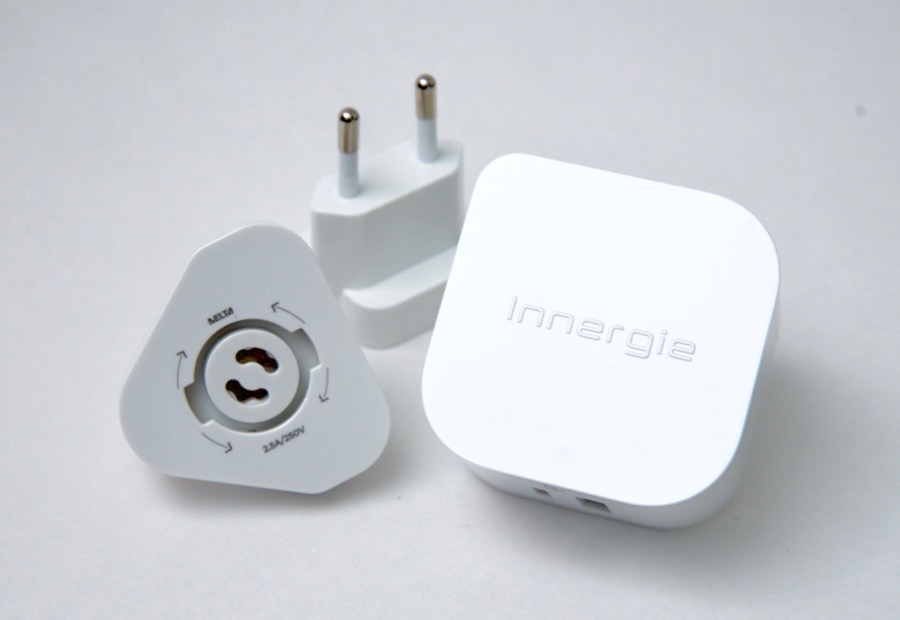
A month ago, I received an email from Innergie asking me if I'd like to review their new USB-C charger they were releasing. I had just returned from a business trip and was slightly regretting only having my MacBook Pro's included USB-C charger, which has one USB-C port. Charging my phone meant plugging my laptop into the AC adapter, then plugging a Lightning cable into my MacBook Pro.
I didn't want to have to bring along a separate USB-A power adapter, but it would've been more convenient, since I could charge the phone separate from the laptop.
The Innergie PowerJoy I was given for this review includes both a USB-C and a USB-A port for charging, and you can use both at the same time—with a few caveats. Read on for more!
Build Quality and Features
For a new product from a lesser-known off brand, this little power adapter is surprisingly well-built. The case feels similar to the white plastic Apple uses for it's AC adapters, and the connections were all rigid. The ports fit my cables well, and the power plugs were retained very well in any orientation.
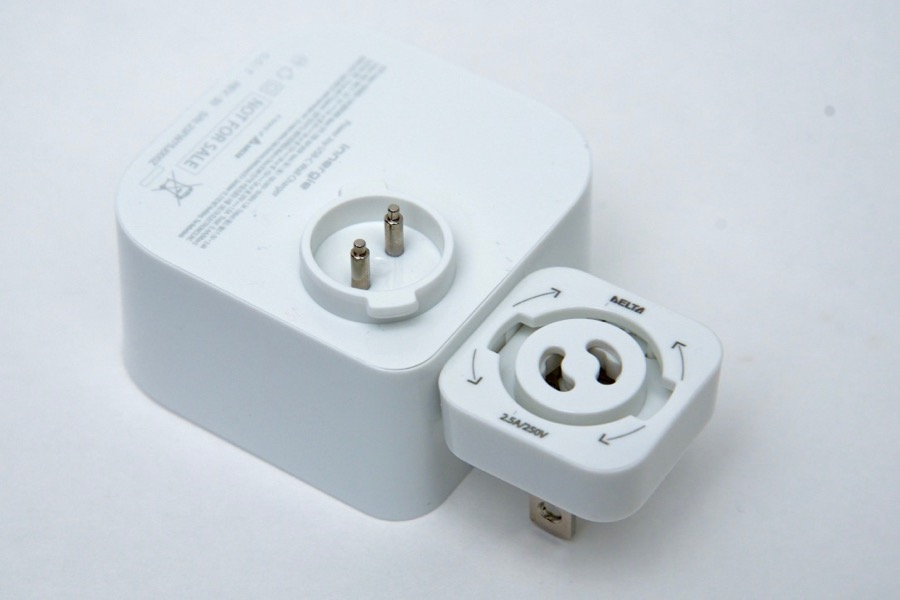
That brings me to the Delta universal wall adapter socket: it's a neat way to be able to rotate the PowerJoy in two different plug orientations, so it fits in almost any kind of outlet (wall, power strip, extension) without blocking other outlets. It's almost too difficult to twist the adapters on or off (the PowerJoy comes with three—for US, UK, and most of Europe), but I'd rather have that than an adapter that gets unseated easily.
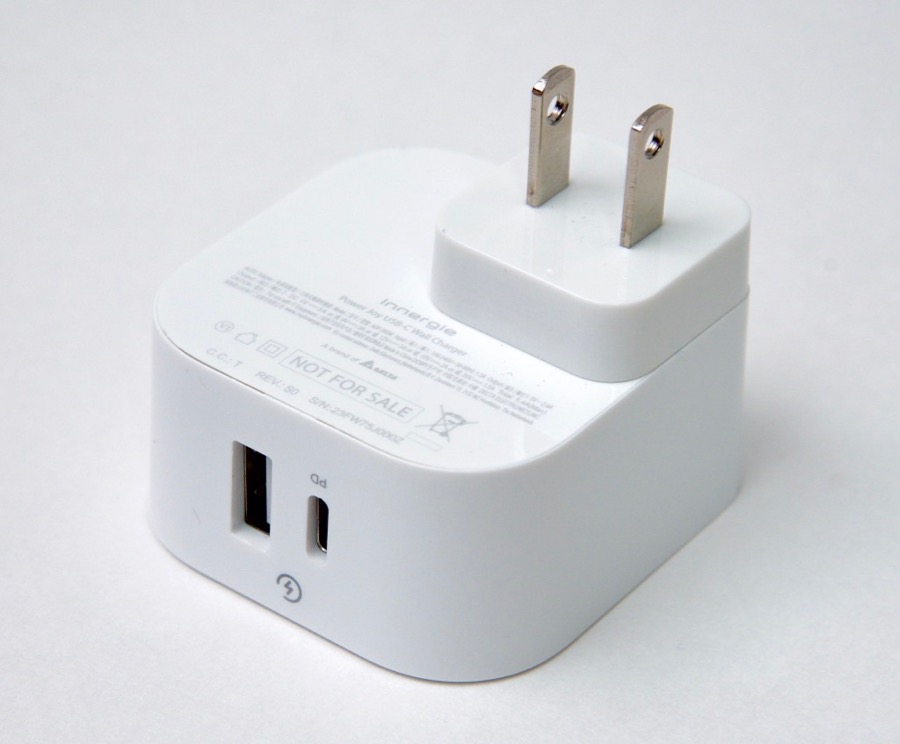
The USB ports (A and C) were both solid and had enough distance between the two to allow for my Apple cables to plug in at the same time, with a slight gap between them. From a hardware perspective, this adapter is pretty compelling. Especially if you are charging two phones, or a lower-power laptop or tablet and a phone.
Once caveat to using this charger: it seems to get quite hot if you use it for long periods of time with two devices at maximum capacity! In the image below, I'm measuring the surface temperature using an infrared thermometer:
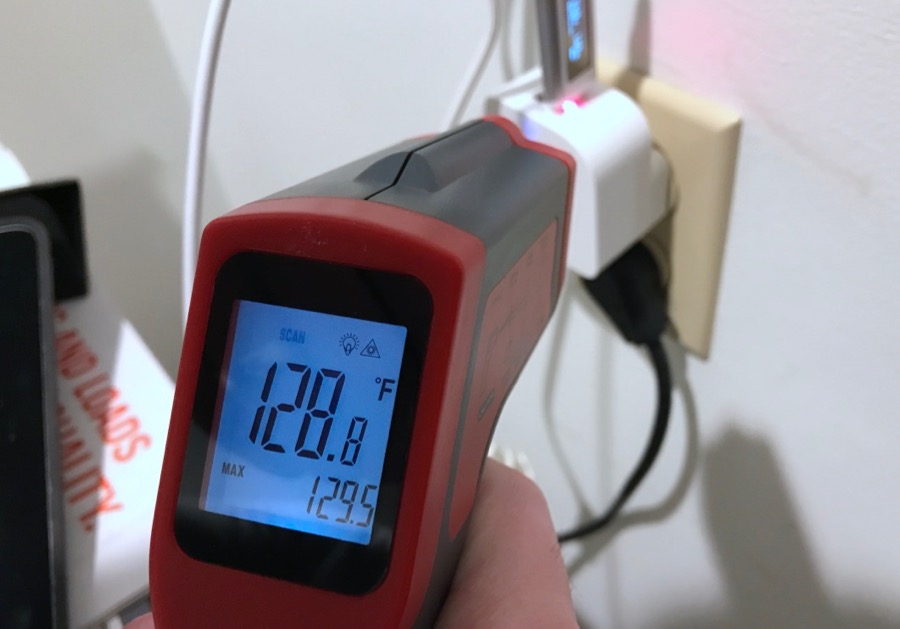
It's not enough to give you a burn, but you may want to consider letting it cool off a bit before stashing the adapter in your laptop. Under normal use with a single device, the charger didn't exceed 110°F, but at full-tilt for 20 minutes, it peaked just under 130°F.
USB-C Charging
The USB-C charging capability was what I was most interested in, having purchased a MacBook Pro that uses USB-C for charging. Using the official Apple adapter, I could charge at around 60W, and the battery would get topped off pretty fast. Most third-party hubs and adapters with Power Delivery (PD) only offer ~30W maximum power output. This adapter is the same, in that regard—great for charging lower-capacity phones and tablets, but only so-so for use with a power-hungry MacBook Pro.
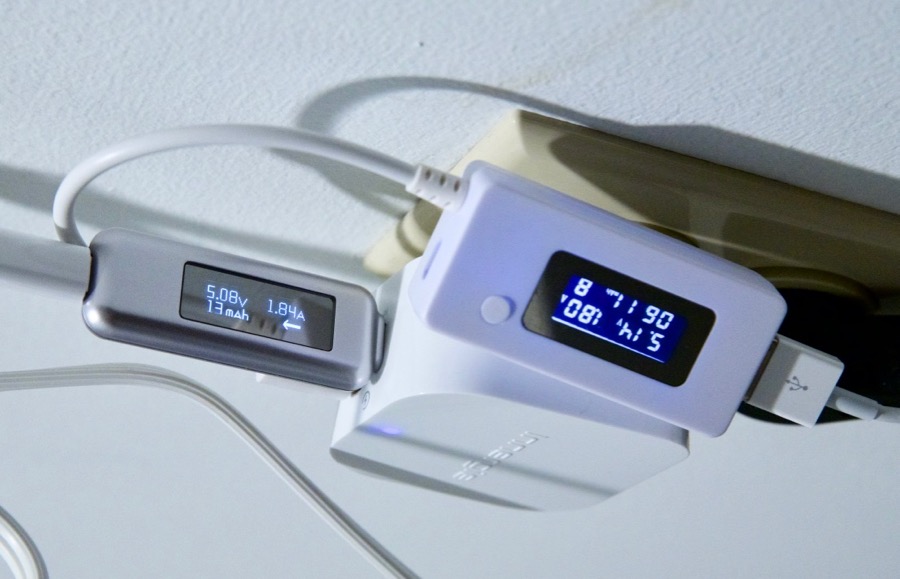
Another important caveat: when you're using both of the plugs on the adapter, the power adapter limits both ports to ~1.8A (instead of ~3.0A). This means that if you are trying to charge and use a MacBook Pro (which needs at least ~2.4A to recharge while in use), my MacBook Pro may actually have a net loss of battery charge unless the usage is very light, and the screen is dimmed; reference the following image:
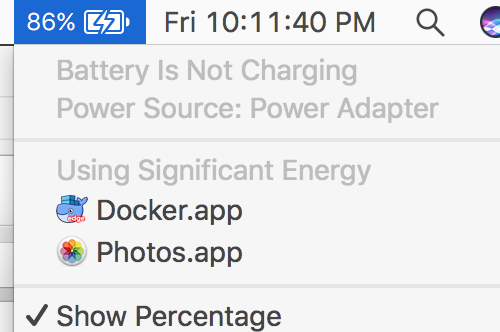
This doesn't happen with a dedicated USB-C charger, nor does it happen if you only plug in a USB-C device, and not a USB-A device. In the latter scenario, the amperage bumps up to the charger's maximum rate, which works a bit better if you need to use a high-power-draw device while charging:
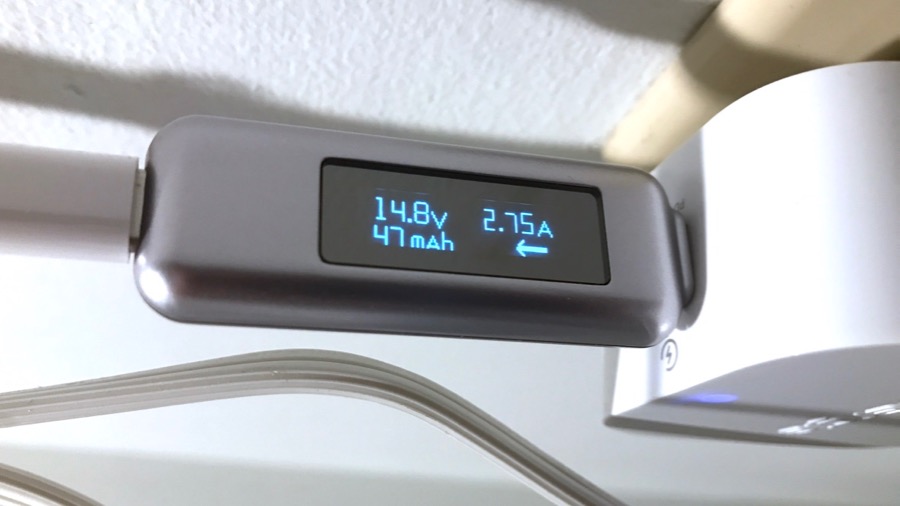
USB-A Charging
USB-A charging works great, and for most devices, the PowerJoy will deliver as much power as your device can handle, even when something's using the USB-C port as well. My iPhone 7 charged faster than it did using Apple's included USB-A adapter, and slightly faster even than the Apple 10W USB adapter. Same case with my iPad.
Summary
Jeff's rating: 4/5 stars.
The Innergie PowerJoy USB-C charger is a solid power adapter for charging via USB-C and USB-A simultaneously. If you have a high-power-draw device like a MacBook Pro, then the adapter may have a little less utility, but if you use a smaller USB-C device and need to charge both it and a USB-A device, then this is one of the most compact and well-built adapters I've used.
You can sign up be notified when the charger is available for sale—visit the PowerJoy 30C USB-C Wall Charger website for more details.
Comments
Hi Jeff, I bought this to fast charge my iPhone XS Max, but it isn't charging as fast as my 61W Macbook Pro charger. Any idea what voltages / amps it's charging at for an iPhone X / XS / XS Max?